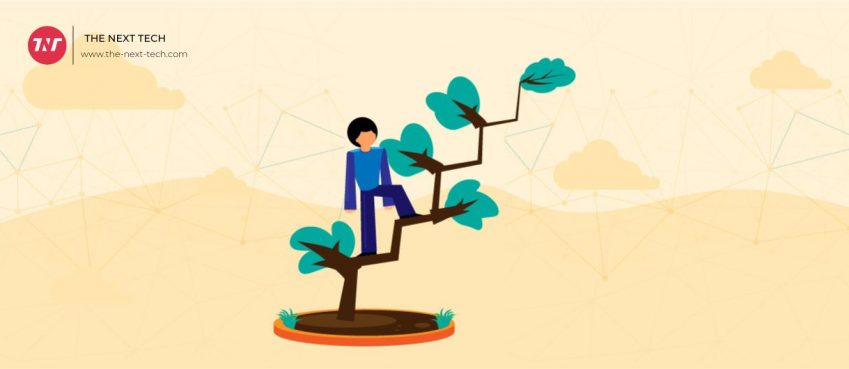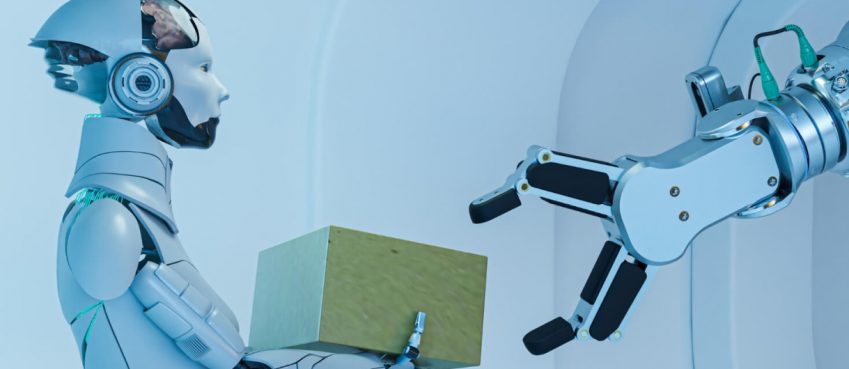
Healthcare IoT (also known as the Internet of Medical Things, IoMT) is the best option given the post-Covid challenges that the healthcare industry will face.
Covid-19 has made the healthcare industry a focal point for the past two years.
Healthcare has been a major focus in the last two years. Technology is essential in preventing and controlling the spread of the pandemic.
IoT is one of the most important technologies in the fight against pandemics. It allows doctors and other medical personnel to monitor and treat Covid-19 patients remotely without worrying about contamination or getting infected.
IoT’s role isn’t limited to remote diagnosis and monitoring of patients. It also covers other aspects of healthcare such as managing virtual hospitals wards, making sure diabetic patients receive their insulin doses on time, and helping to prevent heart attacks.
Smart devices powered by IoT can also help people with disabilities live better lives. This is thanks to the real-time sensors that are embedded in their equipment.
IoT will play an increasingly important role in patient care, research, the development of medicines and better management of healthcare facilities as internet and cloud technologies continue to develop.
Before we get into the details of IoT’s role in the healthcare sector, let’s take a moment to explain what IoT is and how it works.
What is IoT
Let’s say one wanted to understand IoT using simple terms. IoT is a term that refers to internet-enabled devices and things that can collect and analyze information, and then share it with other devices and programs via the internet.
IoT-enabled devices can transfer data in real-time to other networks. This can be anywhere around the globe. These devices are valuable and important because they can be used for everything from basic household appliances to critical parts of spaceships.
These devices can be programmed to work independently of human intervention.
Low-cost computing, cloud computing, easy access to smart devices, and ubiquitous internet connectivity are some of the reasons for IoT’s growth.
IoT is not only used for health care but also in nearly every industry, from spaceships and automobiles to agriculture and agriculture. It’s used to transmit real-time data about soil conditions and moisture levels.
The Role of IoT in the Healthcare Sector
The pandemic is just one example of the impact IoT has on healthcare. However, there are many more examples of how IoT enhances healthcare. We will take a look at the many areas where IoT has already had an impact on improving the quality of life.
1. Virtual Hospitals / Wards
The key to halting the spread of the epidemic was isolation. This has been made possible by the establishment of virtual hospitals. Sometimes, even in the patient’s own home.
For example, in Australia, only 51 of the 475 Covid-positive people needed to be admitted to a brick and mortar hospital. The rest could be treated at home.
This transformation has been made possible by smart and connected IoT-based devices.
Devices that measure oxygen and other temperature can be sent to doctors at a monitoring station. They will monitor vital parameters and then prescribe the appropriate treatment.
The UK and UAE have implemented IoT-based medical systems to virtual treat more patients, reduce the burden of traditional hospitals, and make healthcare easier and more accessible.
IoT will be more widely accepted and used in healthcare as countries adopt new technologies for their health care to better prepare them for future pandemics.
2. Automated Insulin Delivery Systems
Diabetes is preventable by regular monitoring of blood sugar levels and timely insulin dosage.
This is possible thanks to IoT-enabled devices, which monitor blood sugar levels and calculate the insulin dosage required based upon current blood sugar levels.
Automated Insulin Delivery Systems (AID) deliver insulin doses to the body even while the individual is asleep.
These AID systems make it possible for patients with diabetes who require regular insulin injections to not have to rely on others.
The AID systems ensure that patients are taking their insulin doses as prescribed and regularly. This prevents any sudden spikes or drops in blood sugar.
These AID systems can help prevent diabetes from spreading to more than 8.5% of the world’s population, according to WHO.
Also read: New Bethesda’s Fallout 5: Is It Coming Or Not? Answered
3. Wearable Biosensors
Wearable biosensors have become a reality.
IoT-based biosensors allow doctors to monitor the vital parameters of their patients even if they are not in a hospital setting. This has made it possible for doctors to perform routine physical exams and prepare reports in a shorter time.
They are lightweight and comfortable and can be worn to monitor heart rate and temperature as people go about their day.
Biosensor data can be further analyzed to determine the patient’s health at different activity levels and to identify the causes of any changes in their health parameters. It can prevent sudden health problems from occurring.
Biosensors can reduce the need for regular health visits, which will save you both time and money over the long term.
4. Remote Treatments
The internet and advancements in communication technology have made it possible to upload patient data and access it quickly from anywhere in the world. This makes remote diagnosis and treatment easy.
Doctors can access IoT devices in real-time to view health parameters and reports. They can then take corrective or preventive actions if necessary.
Algorithms and AI analyze the data to generate alerts when the health parameters are outside the normal range. We can program IoT devices so that they contact emergency healthcare providers in an emergency. If necessary, this will allow us to provide timely care and hospitalization.
Remote treatment is possible for not only chronic or fatal illnesses, but also common conditions, eye care, surgery, and common ailments.
Biosensor data can be further analyzed to determine the patient’s health at different activity levels, and identify any changes in their health parameters. It can prevent sudden health problems from occurring.
Biosensors can reduce the need for regular health visits, which will save you both time and money over the long term.
Also read: The 15 Best E-Commerce Marketing Tools
5. Maintenance of health care equipment
IoT is not just for patients. It can help diagnose medical equipment problems and provide corrective actions if necessary.
Medical devices are programmed so that they work within prescribed parameters. Any deviations or fluctuations in results will be reported. A significant deviation from the recommended values can trigger an automatic diagnosis. For further action, the results will be sent to technicians and equipment manufacturers.
To prevent damage or malfunction, the systems can provide automatic updates and maintenance plans.
IoT devices can be used by health care equipment manufacturers to monitor and control the proper use of high-end medical equipment. This will help to ensure that any malfunctions are prevented.
6. Robotics
Complex surgeries can be performed much more efficiently with IoT-enabled, micro-robots that are placed within the body. This is especially true for areas that are difficult to operate with the hand.
The healing process is faster and requires fewer incisions. The IoT-enabled, microrobots can also communicate with patients in real-time from the body. This allows surgeons to take quicker and more responsive decisions.
IoT-enabled robotics can also be deployed in the care of patients with routine tasks such as medication delivery or measuring health parameters like temperature and blood pressure.
Also read: What Is Spotify Premium Duo? Explained (Pros & Cons)
7. Heart Rate Monitoring
Biosensors monitor vital parameters like temperature and blood pressure. However, patients with heart problems must also be monitored continuously to detect any unexpected or serious complications.
The results of periodic cardiology tests do not indicate future rapid fluctuations in heart rate. Patients must be connected to wired machines to measure heart rate accurately. This can hinder their mobility and make it difficult for them to move around.
Smartwatches and wearables, which are IoT-enabled, are a step in a positive direction towards monitoring vital cardiac parameters and sounding alarms over irregularities. Although they are not 100% accurate at the moment, technology is improving with more features like ECG recording and alarm sounding over irregularities.
Medical practitioners can monitor the heart rhythms of their patients and ensure they are following the prescribed treatment regimens.
8. Data Analysis
Real-time information on the patient’s symptoms, and their health status is a key requirement in critical care. Traditional diagnostic machines can take a long time to collect, analyze, and share data.
IoT devices on the other side have sensors that can instantly capture and share data. This allows doctors to quickly analyze the data and confer with other specialists about the best treatment.
A majority of these devices can also be used for AI and Machine Learning. This allows them to provide a quicker and more accurate diagnosis and test results.
IoT-enabled devices may also be able to recommend the next course of action based on the analysis of data. The data from patients can be used to analyze the data and determine the cause of the problems.
Also read: Top 9 WordPress Lead Generation Plugins in 2021
9. Research
IoT-enabled equipment and devices are primarily designed to collect and analyze data. They can also be of great assistance in researching medical applications or technologies.
Researchers can use the data from IoT-enabled gadgets to help them study various diseases and develop preventive medicine. IoT-enabled devices can share real-time data to help stop a disease from spreading before it becomes a pandemic.
IoT-enabled devices also can collect vital data about health and make data-driven decisions. This can help speed up research, reduce errors and improve decision making. Research labs can use them to reduce research costs by a faster and more accurate collection of patient data.
10. Healthcare Management
IoT is an important factor in healthcare delivery and management.
Hospitals are adopting new technologies and equipment. This means that there is a greater need to ensure that all the pieces work together to offer better services.
IoT-enabled technology in hospitals can be made easier and more accessible by facilitating easy access to data from patients, doctors, and specialists.
IoT is seen as a key component in many healthcare organizations’ ability to monitor and maintain equipment and other facilities. IoT can also be used to remotely manage and operate healthcare equipment.
IoT-enabled technology plays an important role in hospitals managing a perfect environment. This is due to the many factors like temperature, humidity, air circulation, oxygen level, etc. that must be constantly monitored and maintained.
Also read: 10 Best Saas Marketing Tools And Platforms For 2021
IoT is Transforming the Healthcare Industry.
The IoT is changing the way that industries collaborate and within their organizations. Healthcare is where IoT has the greatest impact. They play an important role in saving lives and ensuring that patients get the best possible medical care.
IoT’s important role in healthcare transformation is evident in the widespread acceptance and use of IoT in healthcare. The use of virtual medical assistants is another important advancement in healthcare.
Remote treatments, virtual hospitals, and virtual medical assistants make health care more accessible. Meanwhile, biosensors, heart rate monitors, and biosensors help in real-time access to critical patient data. This allows for faster diagnosis and better treatment.
As technology advances and internet access increases even in remote areas, we will see more innovations in IoT technologies. This is especially true for the health sector as it makes it easier and more accessible to all.
Top 10 News
-
01
10 Exciting iPhone 16 Features You Can Try Right Now
Tuesday November 19, 2024
-
02
10 Best Anatomy Apps For Physiologist Beginners
Tuesday November 12, 2024
-
03
Top 10 Websites And Apps Like Thumbtack
Tuesday November 5, 2024
-
04
Top 10 Sites Like Omegle That Offer Random Video Chat
Monday October 21, 2024
-
05
Entrepreneurial Ideas To Make 5K In A Month (10 Realistic Wa...
Monday October 7, 2024
-
06
[10 Best] Cash Advance Apps Like Moneylion And Dave (No Cred...
Friday September 20, 2024
-
07
Top 10 Richest Person In The World
Tuesday August 27, 2024
-
08
Top 10 Unicorn Startups In The World (2024-25)
Monday August 26, 2024
-
09
Top 10 IT Companies In The World By Market Cap
Thursday August 22, 2024
-
10
[10 New] Best OnionPlay Alternatives To Stream TV Shows And ...
Tuesday June 11, 2024







